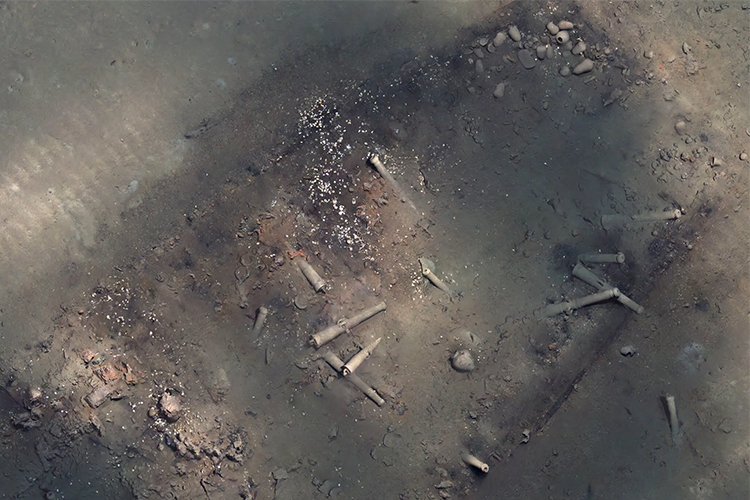
What was once a traveling fortune lies amongst the dirt and debris of the Caribbean Sea, buried nearly 3,100 feet underwater. photo credit to The Columbian Institution of Anthropology and History, via Associated Press
Colombian President Gustavo Petro is on a mission to exhume the San Jose.
The San Jose, a 62-gun, 3-masted ship, was the flagship vessel of the Spanish treasure fleet. On the fleet’s final voyage in June of 1708, it is believed that the San Jose left Panama heading for Cartenga along with 2 other galleons and 14 merchant vessels. Filled with gold, silver, and emeralds mined in Bolivia, the fleet docked for the night on the island of Baru, off of the coast of Cartagena.
On the night of June 8, 1708, a battle erupted between the fleet of Spanish galleons and four British warships. The gruesome and fierce gun battle lasted into the twilight hours. One galleon, the San Joaquin, managed to escape the battle under the cover of darkness. The second galleon, the Santa Cruz, was captured, but was loaded with very few valuables. The third and most valuable ship, the San Jose, suffered catastrophic damage after a powder magazine exploded due to a strike from British gunfire. The ship quickly vanished beneath the surface, sinking to the floor of the Caribbean Sea, killing all but 11 crew members and burying billions in treasure underwater.
Today, the three-century-old shipwreck is set to be resurfaced in a venture launched by Colombian President Gustavo Petro, who has ordered his regime to exhume the “Holy Grail of Shipwrecks.” Petro’s mission is to have the ship surfaced before the end of his term in 2026. Colombian Minister of Culture, Juan David Correa, announced to news outlets that “this is one of the priorities for the Petro administration.” However, the true controversy surrounding the wreck is in regards to the ownership of the massive trove of treasure. It’s estimated to be worth anywhere from four to 20 billion dollars. For centuries, the location of the shipwreck had remained a mystery with rumors and myths surrounding the wreck. Finally, in 1981, one company, Glocca Mora, now known as the Sea Search Armada, discovered the shipwreck and released the coordinates to Columbia with a promise it would receive half of the fortune after it was recovered. In 2015, the then-President Juan Manuel Santos announced that the country’s navy had found the San Jose at a different location of the seafloor.
The Sea Search Armada believes that Columbia found the same part of the debris field that they had discovered 34 years earlier. Columbia has never released the final resting coordinates of the shipwreck, further fueling the beliefs and claims from Sea Search Armada regarding the ownership and discovery of the treasure. The company is suing the Colombian government for $10 billion, which is half of the estimated value of the treasure. This value comes from an estimate from the US-Colombia Trade Promotion Agreement, according to Bloomberg. Meanwhile, Correa, representing Columbia, has made claims to news outlets stating that the government’s researchers visited the coordinates that were shared by Sea Search Armada and that they had “concluded that there is no shipwreck there.” The ownership of the wreck is going to be difficult to accurately conclude, but one thing that is certain: the recipient of the shipwreck’s treasure shall forever carve their name into history with gold.